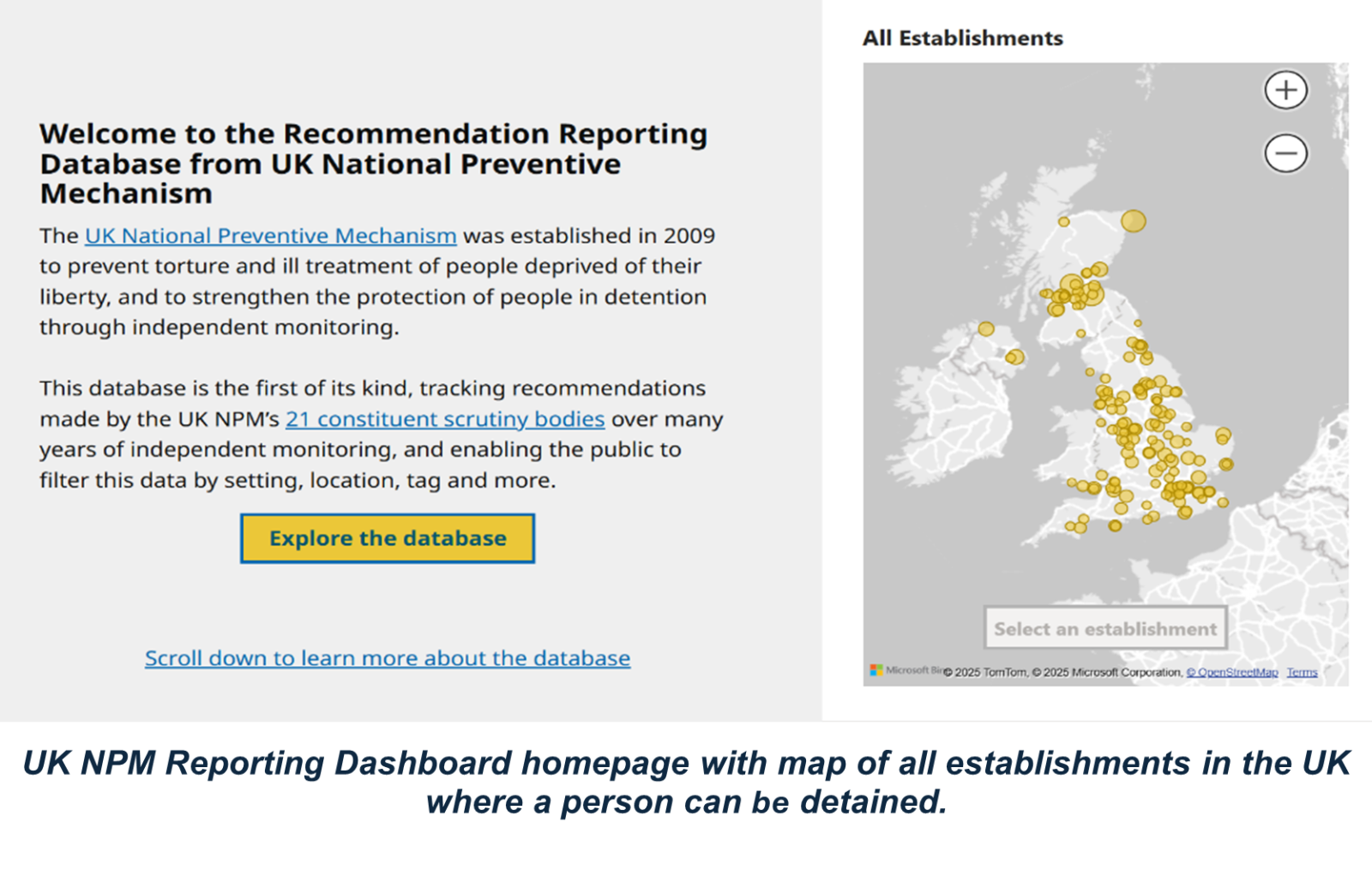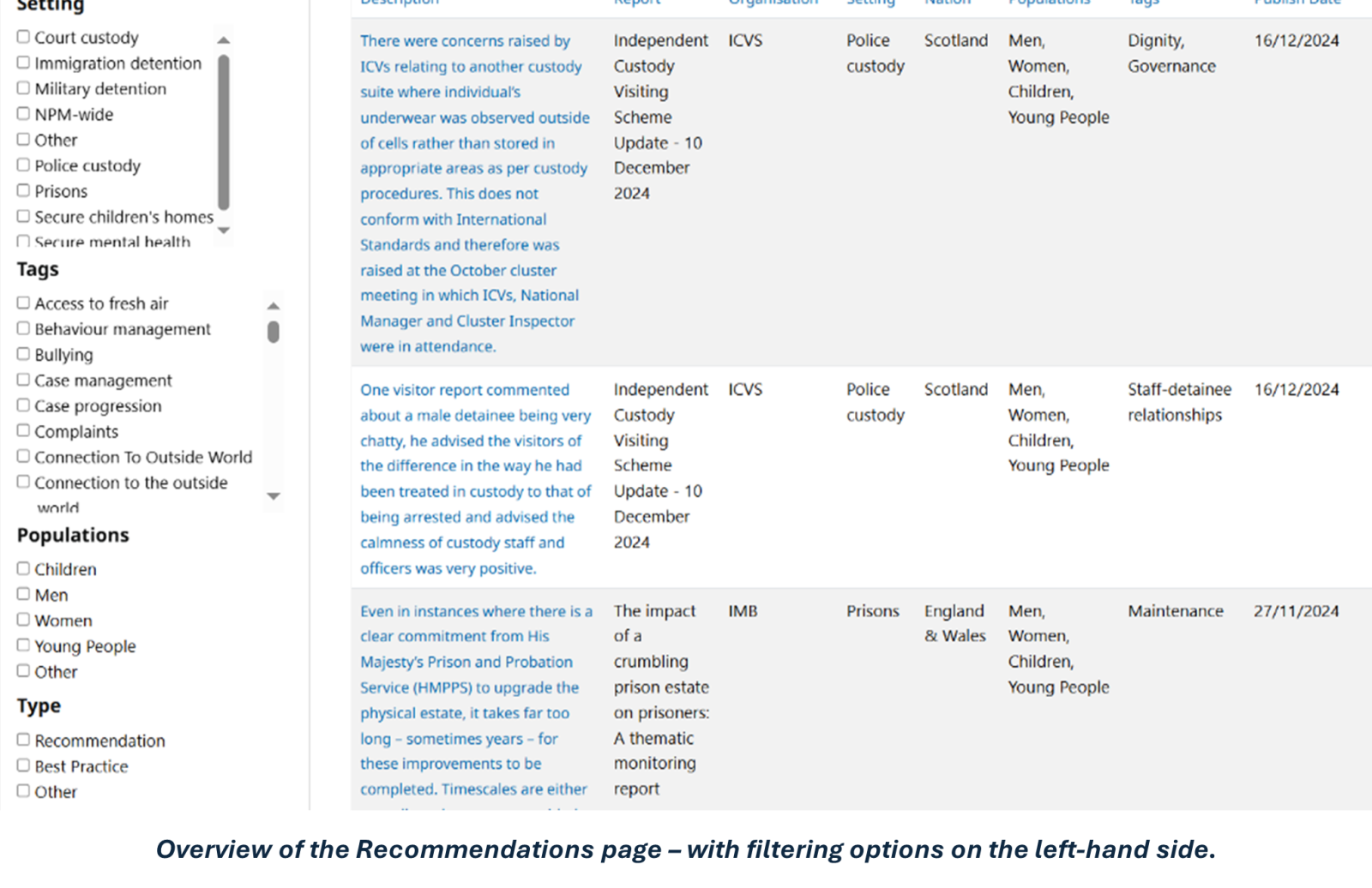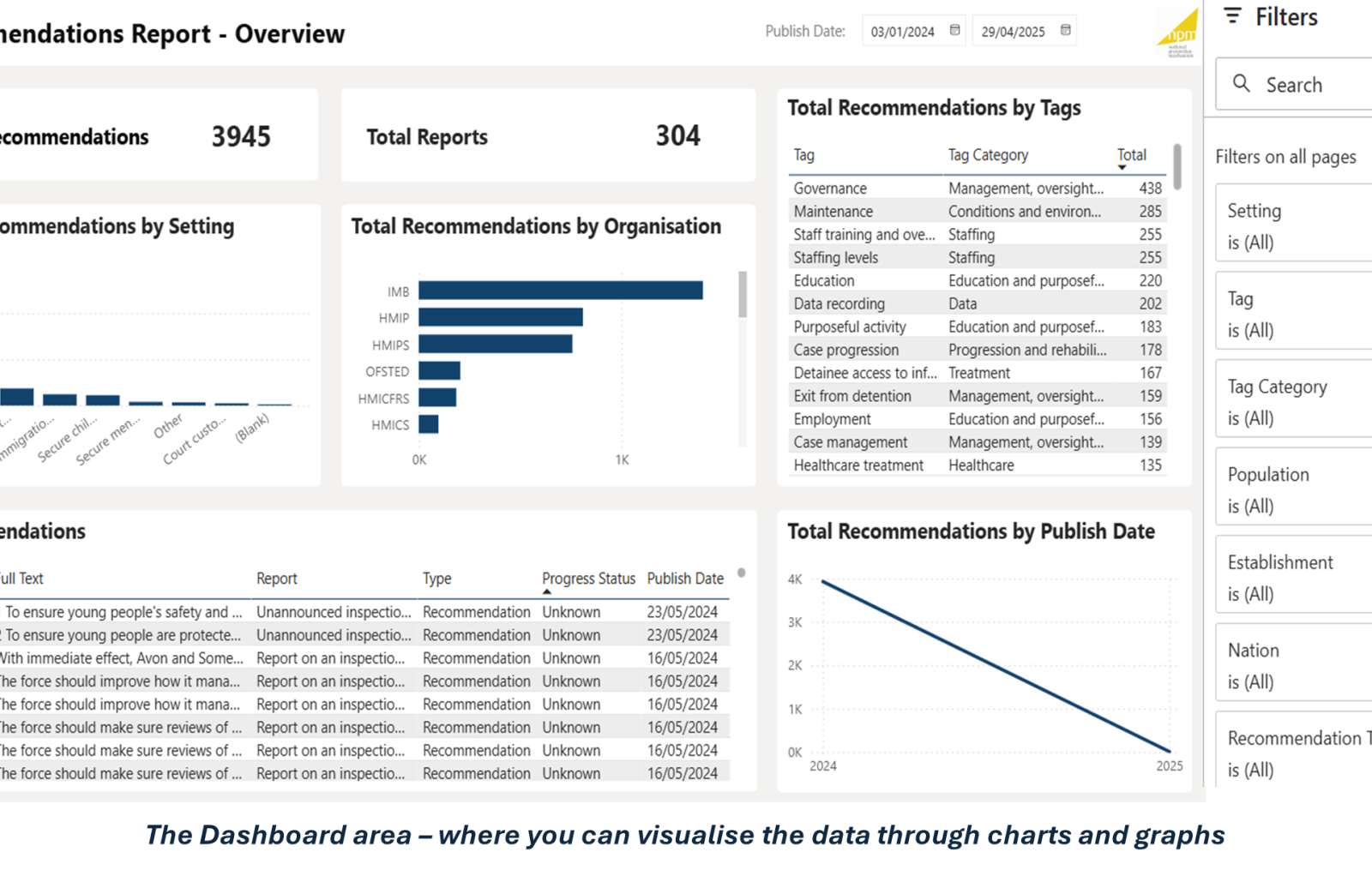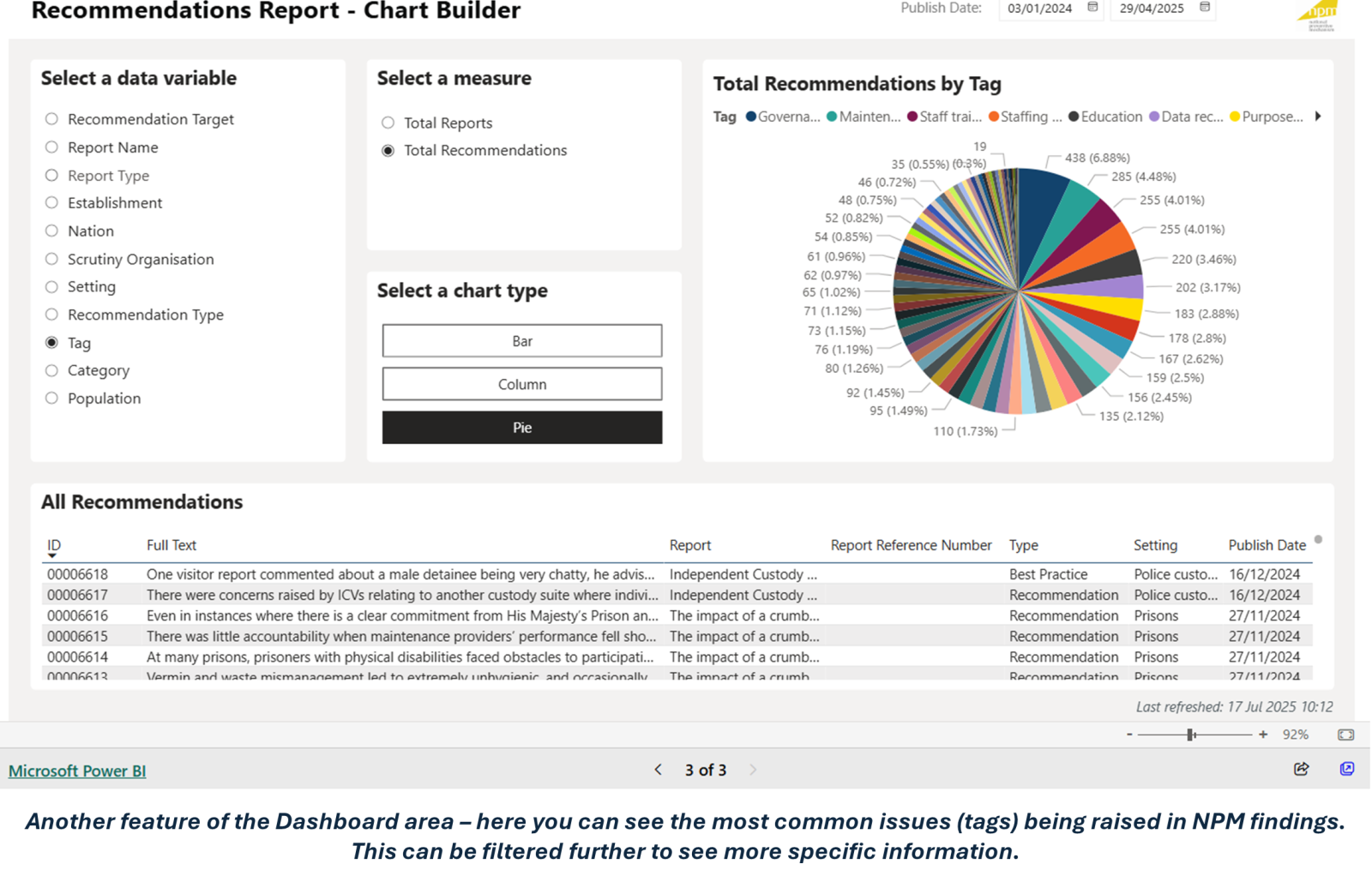
In this Q&A, Sam Gluckstein, Head of the United Kingdom’s National Preventive Mechanism, explains how a groundbreaking new reporting dashboard could help shift the culture of detention oversight—from fragmented data to collective insight and from reactive monitoring to proactive, solutions-focused prevention.
Firstly, can you introduce yourself and the UK NPM?
I am Sam Gluckstein and am Head of the United Kingdom National Preventive Mechanism. I have a background as a Human Rights Lawyer and inspected prisons prior to taking up this post. The UK NPM is one of the largest and most complex NPMs in the world. We have a multi-body structure with 21 independent bodies and over 3500 people carrying out the OPCAT mandate in four nations.
I lead a small but mighty team that exist to support and lead NPM bodies in delivering their own responsibilities under OPCAT; undertake collective work and take joint action with a view to preventing ill treatment of detained people in the UK; promote awareness and understanding of OPCAT principles and the work of the NPM; and liaise and work with international mechanisms and organisations with a mandate to prevent ill treatment of detained people.
Can you tell us more about this new reporting tool and why you thought it was so needed?
When I took up this role, it quickly struck me that if there was anyone in the country that really should know what all of the output from our monitoring and inspection was, it was probably me. But I didn’t. And even if I spent every waking hour reading reports, it would be impossible. The UK NPM makes over 5000 recommendations every year and makes several hundred findings of best practice.
I therefore commissioned the design and build of a tool which will capture and codify all recommendations and positive practice the NPM produces. Until now, these findings have only been accessible through individual reports or organisation websites, making it difficult to see the bigger picture or share effective solutions. The Reporting Dashboard transforms this by providing a central space that consolidates all UK NPM data in real time, helping to identify trends, challenges and areas of improvement across detention settings. It also enables the user to visualise data and interact with it in a really accessible way.
This tool was designed with everyone in mind, from NPM monitors to oversight bodies, civil society, policymakers and anyone working to improve conditions in places of deprivation of liberty.
Beyond its core purpose of serving as a central system for UK NPM findings, a key feature of the Reporting Dashboard is its ability to facilitate knowledge sharing. For example, a prison governor can quickly access a list of recommendations or best practices from other prisons across the UK. This kind of knowledge exchange could encourage the adoption of more successful strategies and can drive meaningful improvements in detention.
In a sense you’ve started a decade in and worked backwards, what lessons do you think this process has for new NPMs just starting out?
We recently published an analysis report where we examined recommendation implementation by the state over a 10 year period. Our findings demonstrated relatively poor implementation. This report was challenging to duty bearers, but it was also challenging to us. I believe strongly that it is not the role of NPMs to just denounce from on high – but to work constructively with authorities to effect change.
We also consistently recommended to authorities that they have good data recording and analysis tools in place for their work – but it was a little hypocritical that we didn’t have this established ourselves.
To new NPMs starting out I would suggest keeping on top of recommendations early on – less is often more (he says from an NPM with over 5000 a year!) and ensuring that there is a shared responsibility between the NPM and the authorities for monitoring implementation.
For many reasons – and I know this is something you engaged with very intelligently with your Review, Recommend, Repeat report – getting recommendations implemented is hard, even when there is seeming willingness on the part of government to do so. How do you think this tool will help with that going forward?
In our Review, Recommend, Repeat report, we tried to be honest about the structural and cultural barriers that stand in the way of real progress. Implementation can fall down due to a lack of ownership, absence of follow-up mechanisms, poor data, or simply because the same issues have become so normalised that they no longer feel urgent.
What the Reporting Dashboard offers is a way to shift some of those dynamics. Firstly, by making all recommendations and positive practice visible, searchable, and shareable, it creates greater transparency and accountability. It makes it harder for important findings to disappear into the back of a PDF. Secondly, it enables the identification of patterns – both in the issues raised and in how (or whether) they are being responded to. This can help government bodies and detention authorities to prioritise more strategically, to see what others are doing well, and to learn from that.
But perhaps most importantly, it changes the conversation from being purely reactive to being more proactive. When you can see the same issue being raised in multiple places over time, with similar recommendations attached, it becomes harder to ignore and easier to justify action. And when positive practice is also highlighted and shared, it offers something constructive – a way forward. We’re not naïve about the scale of the challenge, but we hope this tool can support a more joined-up and solutions-focused approach to implementation.
One of the things that makes the UK NPM unique is its tremendous diversity. Do you think this process has highlighted some ways in which you would like to work more cohesively in regard to recommendations? Or are there ways in which maintaining such significant diversity is a strength?
I think our range gives us a much more complete picture of the detention landscape than any single body ever could. It also means we benefit from a wide range of professional expertise, from clinicians to inspectors, legal experts to lay visitors, which makes our collective voice much richer.
That said, this project has certainly surfaced the challenges that come with that diversity, particularly around consistency and cohesion in how recommendations are recorded, framed and followed up. There is huge variation. Some bodies already have sophisticated systems for tracking and analysing recommendations, while others operate in more analogue ways. Developing the Reporting Dashboard required a collaborative effort to find shared language and structure without flattening the nuance of each body’s work.
So yes, I do think this process has shown us areas where more cohesive working could make us collectively stronger. Not by reducing our diversity, but by increasing our alignment where it adds value. For example, developing common categories or tagging systems, sharing good practice on how recommendations are followed up, or working together to highlight recurring themes across detention settings.
In short, I don't think cohesion and diversity are in opposition. The aim is to preserve what makes each body effective in its own context while finding better ways to join the dots and speak with a stronger collective voice, especially when the same issues are being raised again and again across different settings and populations.
How can we find out more about this tool and learn how to use it?
We’ll share the link on the 20th of August. We’re really excited to show the world this project – so please do register for the launch event on the 20th of August 11:00-12:00 BST. We’re happy to support others in both using the tool, or setting up their own.
Link to register - https://events.teams.microsoft.com/event/f641cc3b-9977-45b2-b9a1-207a7b458ccd@c6874728-71e6-41fe-a9e1-2e8c36776ad8




